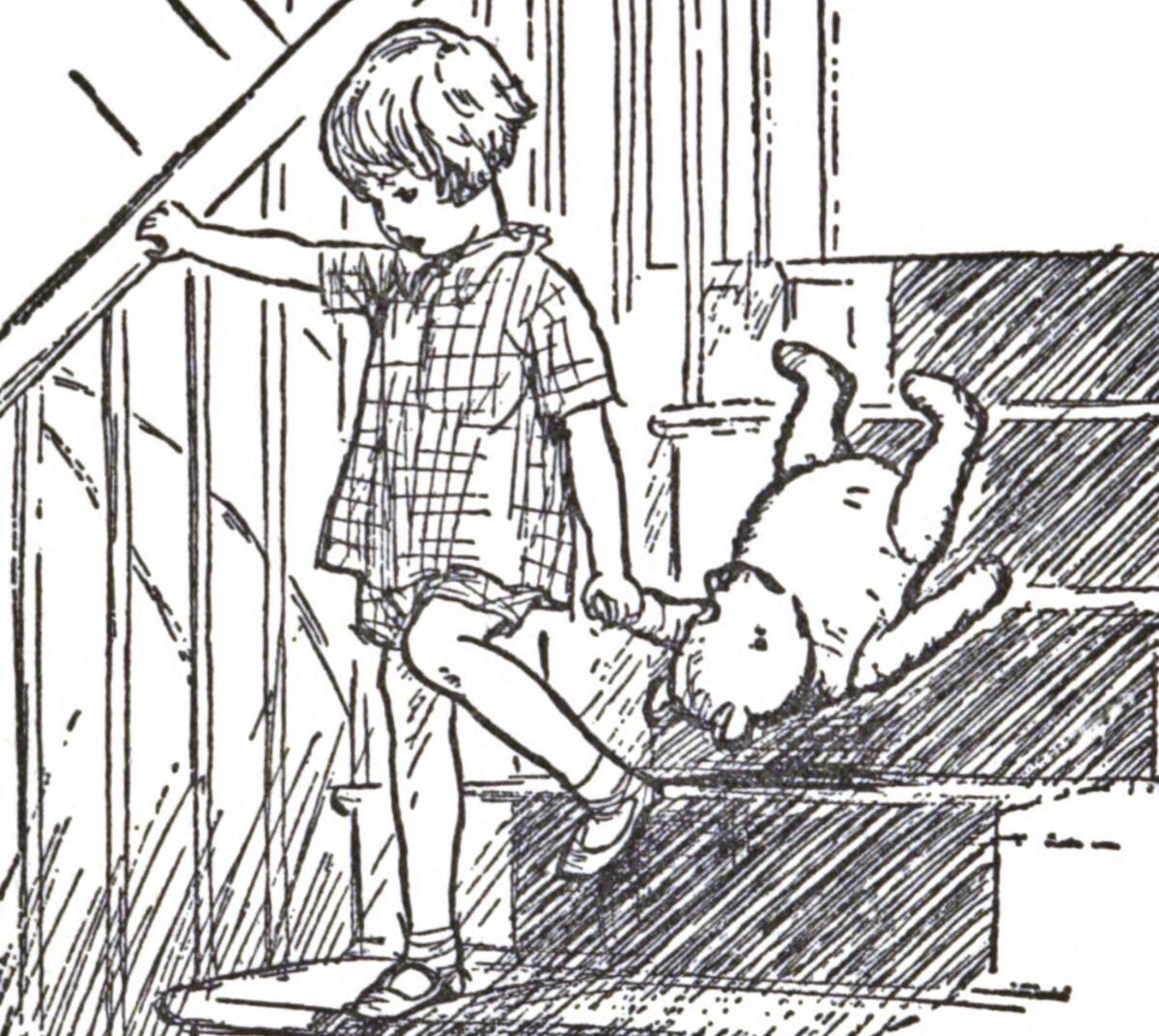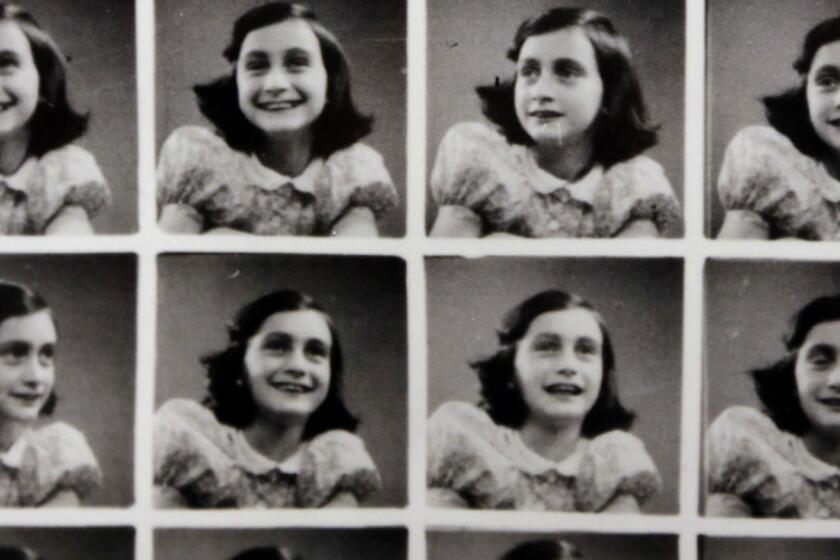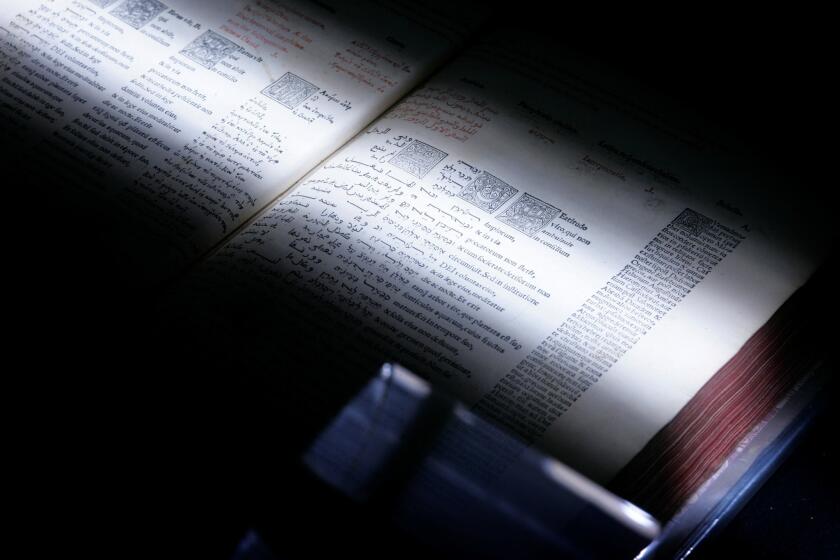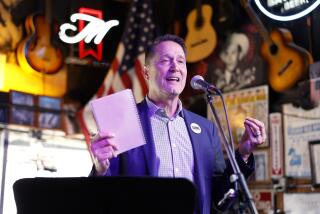Column: ‘Winnie-the-Pooh’ (born 1926) is finally in the public domain, a reminder that our copyright system is absurd

In recent years, every New Year’s Day has brought a bumper crop of literary and artistic works into the public domain — that is, out of copyright after decades of protection.
This year, the harvest is especially rich.
Among the written works first published in 1926 featured in what copyright experts at Duke Law School called Public Domain Day 2022 is “Winnie-the-Pooh,” A.A. Milne’s first exploration of the Hundred Acre Wood.
Only a small percentage of works has an economically viable life even approaching 75 years.
— Congressional Research Service, 1998
Others include Ernest Hemingway’s novel “The Sun Also Rises”; poetry collections by Langston Hughes and Dorothy Parker; Felix Salten’s “Bambi,” the first novel of William Faulkner (“Soldiers’ Pay”) and the early Agatha Christie novel “The Murder of Roger Ackroyd.”
There are films such as Buster Keaton’s “Battling Butler” and Harold Lloyd’s “For Heaven’s Sake” and musical compositions including “Bye Bye Black Bird,” the Gershwins’ “Someone to Watch Over Me,” and Puccini’s opera “Turandot,” featuring the ever-popular aria “Nessun Dorma.”
Get the latest from Michael Hiltzik
Commentary on economics and more from a Pulitzer Prize winner.
You may occasionally receive promotional content from the Los Angeles Times.
“There are many ‘firsts’ this year,” says Jennifer Jenkins, director of Duke’s Center for the Study of the Public Domain, “most notably the first time sound recordings have entered the public domain, with some 400,000 recordings from before 1923 becoming free to sample, remix, or use in a soundtrack.”
Among those pre-1923 sound recordings entering the copyright-free zone are “Swanee” sung by Al Jolson, Italian aria recordings by Enrico Caruso, and “Down Home Blues” sung by Ethel Waters.
As it happens, however, this massive release isn’t something entirely worth celebrating. Instead, it’s a pointer to the sheer absurdity of American copyright law, which long ago came under the thumb of the entertainment industry and distant heirs of artists determined to preserve what is essentially a windfall.
Copyright terms have been consistently extended not in the interests of the works’ creators, but for the benefit of corporate behemoths such as the Walt Disney Co. and the families of George Gershwin and Oscar Hammerstein II, copyright expert Dennis Karjala told me in 2015. Indeed, the most recent revisions to the Copyright Act have been retroactive, covering works whose creators were already dead.
It’s proper to keep in mind that copyright law was not designed originally to keep cash flow running for future generations of a creator’s family. The idea was always to preserve an incentive for creators to create, by guaranteeing that they would be able to enjoy the fruits of their own labor for a set period.
As Duke’s center observes, the first U.S. copyright law in 1790 established a term of 14 years, with copyright owners still living at the end of that period permitted to renew for another 14 years.
Eventually, the term was extended to 28 years, plus a single renewal option of another 28. (The vast majority of copyrights were never renewed.) The 1976 Copyright Act extended the term to 50 years from the date of an author’s death, and the 1998 Sonny Bono Act increased it to 70 years after the death of the author, and to 95 years after publication for corporate works-for-hire.
The 1998 act didn’t apply only to new works created after its effective date, but to existing works poised to lose their copyright protections. As a result, the 1998 act in effect froze the movement of works into the public domain for 20 years. Under the old law, works created in 1926 would have lost their protection in 2002. Instead, they’re just coming into the public domain now.
Extensions lasting long after the death of the original creators obviously brought them no gain. But even those whose lives stretched well beyond the original publication generally earned little in the out years.
“Only a small percentage of works has an economically viable life even approaching 75 years,” the Congressional Research Service observed in 1998, when the Sonny Bono Act was under consideration. “Even allowing for the optimism and self-confidence necessary in these creative and risky fields ... it is hard to imagine anyone intensifying their efforts on the expectation of their work being commercially viable beyond 75 years.”
That doesn’t apply to entertainment franchises in the hands of big corporations, however, as well as especially enduring works such as Gershwin’s “Rhapsody in Blue” and Hammerstein’s Broadway show lyrics. The Walt Disney Co. has assiduously lobbied for ever-longer copyright extensions to preserve its control over properties such as Mickey Mouse.
(While Milne’s first Winnie-the-Pooh book is now in the public domain, by the way, that’s not true of subsequent works or derivative works such as animated cartoons: Disney owns those later copyrights, thanks to a long legal battle it won in 2009, as well as to Winnie the Pooh as a trademark. But that didn’t give it the rights to the original book.)
It’s a fair bet that Anne Frank never expected her diary to be published, though she may have wished it to be preserved.
“There’s no way a 95-year copyright term is an incentive for anyone to create anything,” said Karjala, who as a law professor at Arizona State led the opposition to the Copyright Term Extension Act, the 1998 federal law known as the Sonny Bono Act after its chief promoter in Congress.
The act wasn’t aimed at encouraging artistic expression, Karjala said. It was pushed by corporate entities such as Disney, which would soon lose rights to the earliest films featuring Mickey Mouse: “They were all concerned about the cutoff of the royalty spigot.”
When the character first appeared in the Disney cartoon “Steamboat Willie” in 1928, it was entitled to 56 years of protection, meaning that Mickey would have entered the public domain in 1984. Before that happened, Congress enacted the Copyright Act of 1976, with a retroactive revision of the term applicable to “Steamboat Willie” (a corporate work) set at 75 years from creation, or to 2003.
As that date bulked large on the horizon, Congress granted corporate creators the most recent extension, pushing the expiration of the Mickey Mouse copyright to Jan. 1, 2024.
Excessive copyright protection does, however, impose costs on other creators who may wish to exploit earlier works for new ones. “New fiction re-tells old stories, new documentaries re-use historical footage, and new music re-mixes and transforms old songs,” as 17 distinguished economists wrote in a 2002 friend-of-the-court brief supporting a challenge to the Bono Act before the Supreme Court. (The court upheld the act.)
A notable feature of all this maneuvering over copyright terms is that it hasn’t done much to straighten out the mazes of copyright claims afflicting some of our culture’s most important and popular creative legacies.
Emily Dickinson, for instance: The Belle of Amherst died in 1886 with the vast majority of her poems unpublished (indeed, unknown). That was 136 years ago, but most of her works are still subject to a copyright claimed by Harvard University, which maintains that “all applications to quote or reprint Emily Dickinson material should go through the Harvard University Press Permissions Department.”
The long-running saga of Google Books and Google Book Search may have reached another milestone, thanks to a ruling in the big company’s favor from a New York federal appeals court.
Harvard acquired the rights through a rather convoluted sequence of events, but it reputedly guards them jealously; on at least one occasion the university has blocked the publication of an anthology that would have competed with a planned new edition of its own.
Whether Harvard’s claim is legally solid has long been a matter of learned debate, but no one has mounted a formal challenge, perhaps out of fear of earning Harvard’s enmity if the university prevails. Even discussion of the copyright claim has been stifled by fear of Harvard, as Georgetown University scholar Seth Perlow wrote not long ago: “The chilling effects of Harvard’s policies not only make it harder to cite and edit Dickinson,” he wrote, “but also to discuss the issue publicly.”
Claims established by Otto Frank, the father of Anne Frank, will keep the copyright on his daughter’s diary in place until the 2040s in the U.S., according to the Anne Frank Fonds (founded by Otto Frank), even though Anne Frank died in 1945, aged 15, in the Nazis’ Bergen-Belsen concentration camp.
Family claims also govern the use of Martin Luther King’s speeches. As I reported in 2015, the King family stringently controlled broadcasting of King’s seminal “I Have a Dream” speech without royalty payments, even as the 50th anniversary of its Aug. 28, 1963 delivery on the National Mall approached in 2013.
The film “Selma,” which related King’s role in the 1965 protests in support of the Voting Rights Act, was limited to showing King speaking paraphrased versions of his speeches, according to its director, Ava DuVernay, in part because the film rights had been sold to Steven Spielberg and in part because acquiring the rights from the King family would have required giving them a voice in how King was portrayed on the screen.
Rights claimants have spent years trying to craft elaborate new exemptions to copyright expirations.
Back in 2014, even Sherlock Holmes narrowly escaped the restrictions of copyright law, when a federal judge finally rejected a claim by the Arthur Conan Doyle estate that the characters of Holmes and Dr. Watson themselves — not just the works in which they appeared — were subject to copyright protection until the copyright expired on the last stories in which they appeared, which would not happen until as late as 2023.
A return to the fundamental principles on which copyright law was originally based would point to a reduction in copyright terms, not the persistent efforts to lengthen them. That’s especially so in the digital age. As the Duke scholars argue, “the public domain is being impoverished just as its opportunities for creativity, innovation, democratic participation, and knowledge advancement are transformed.”
Whether that trend can be stemmed is unlikely. The big money is behind securing their copyright protections for longer and longer periods, until they never expire at all. Will Mickey Mouse enter the public domain as currently scheduled, on Jan. 1, 2024? Perhaps, but that’s probably not a good bet.
More to Read
Get the latest from Michael Hiltzik
Commentary on economics and more from a Pulitzer Prize winner.
You may occasionally receive promotional content from the Los Angeles Times.













